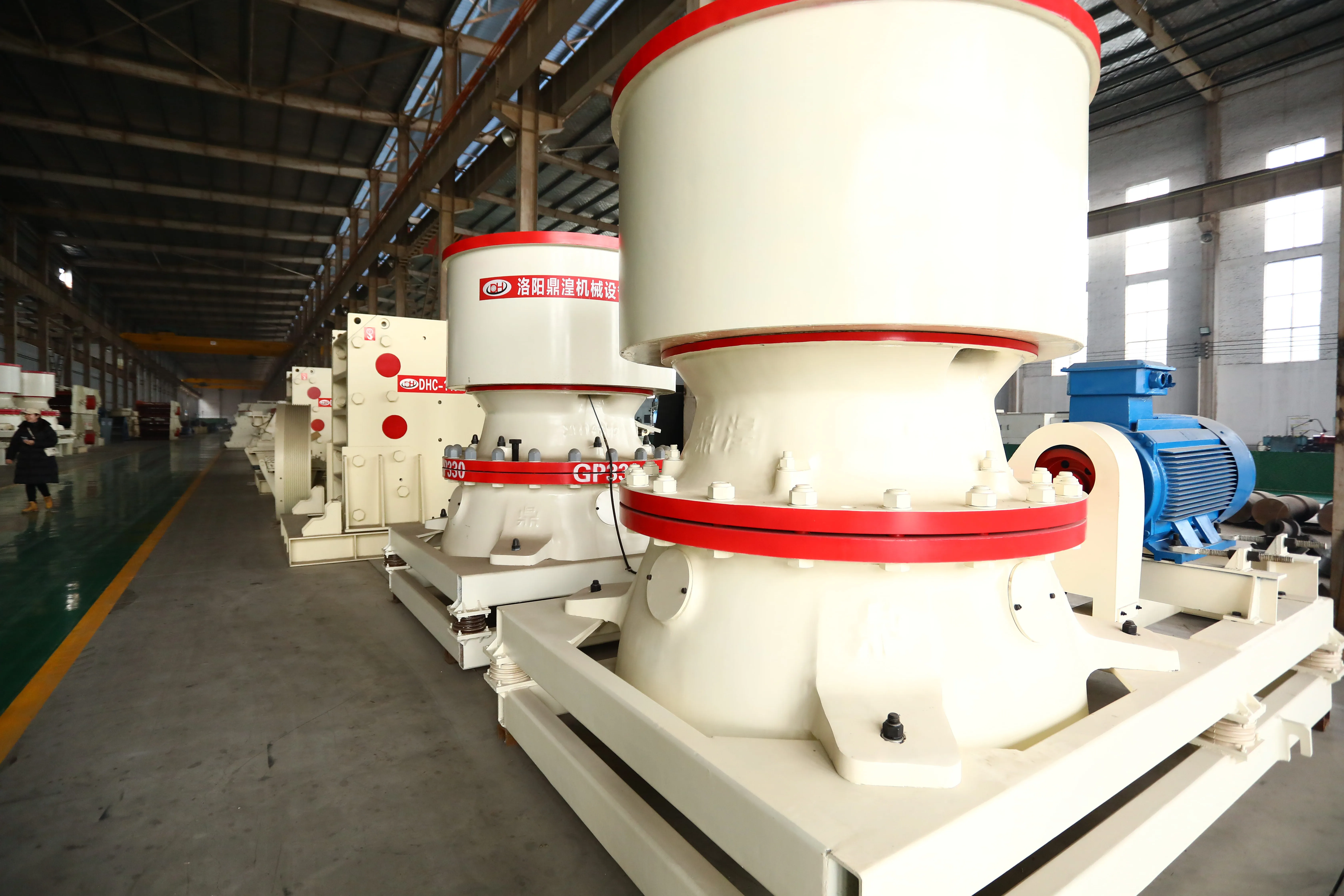A crusher is a machine designed to reduce large rocks, ores, or other materials into smaller sizes, typically for use in construction, mining, or recycling. The way a crusher works depends on its type, but the basic principle is the application of mechanical force to break material into smaller pieces.

How It Works:
Consists of a fixed jaw and a movable jaw set in a V-shape.
Material is fed into the top of the machine and crushed as the movable jaw presses it against the fixed jaw.
The crushed material exits through the bottom opening.
Application: Ideal for primary crushing of hard materials like granite, basalt, and other tough stones.
How It Works:
A conical chamber has a rotating cone inside that oscillates.
Material is fed into the top and crushed between the cone and the chamber walls.
The size of the output is controlled by adjusting the gap between the cone and the chamber.
Application: Used for secondary or tertiary crushing, handling medium-hard to hard materials.
How It Works:
Uses high-speed rotating hammers or blow bars to strike the material.
Material breaks upon impact with the hammers and is further shattered when it hits the impact plates.
Produces finer material compared to jaw crushers.
Application: Suitable for soft to medium-hard materials like limestone and concrete.
How It Works:
Similar to a cone crusher but with a steeper angle and a larger feed opening.
The crushing process occurs as the mantle rotates within the concave chamber.
Application: Used for heavy-duty primary crushing in mining and quarrying.

How It Works:
Two cylindrical rollers rotate in opposite directions, crushing material between them.
The size of the output is controlled by the gap between the rollers.
Application: Often used for crushing brittle materials like coal and salt.
How It Works:
Material is fed into a chamber where hammers mounted on a spinning rotor smash it against breaker plates.
The pulverized material exits through a screen at the bottom.
Application: Used for smaller-scale operations and softer materials.
How It Works:
Material is accelerated by a spinning rotor and thrown against a stationary anvil or rock bed, breaking it apart.
Application: Produces fine and cubical particles, commonly used in sand production.

Material Properties: Hardness, moisture content, and abrasiveness.
Feed Size: Larger feed may require multiple crushing stages.
Desired Output: Different crushers produce different sizes and shapes of the end product.
Crusher Settings: Adjustments to gaps and feed rates impact performance.
In summary, crushers function by applying mechanical force to break down materials into smaller sizes for easier handling and processing.
Address: Luoyang Luoxin Industrial Park, Henan,China
E-mail: sales@yd-crusher.com
Phone: 86-139-3993-0123

Yude
Mechanical
Create the greatest value for customers
Provide the best quality products and services
86-139-3993-0123
sales@yd-crusher.com
Luoyang Luoxin Industrial Park, Henan,China